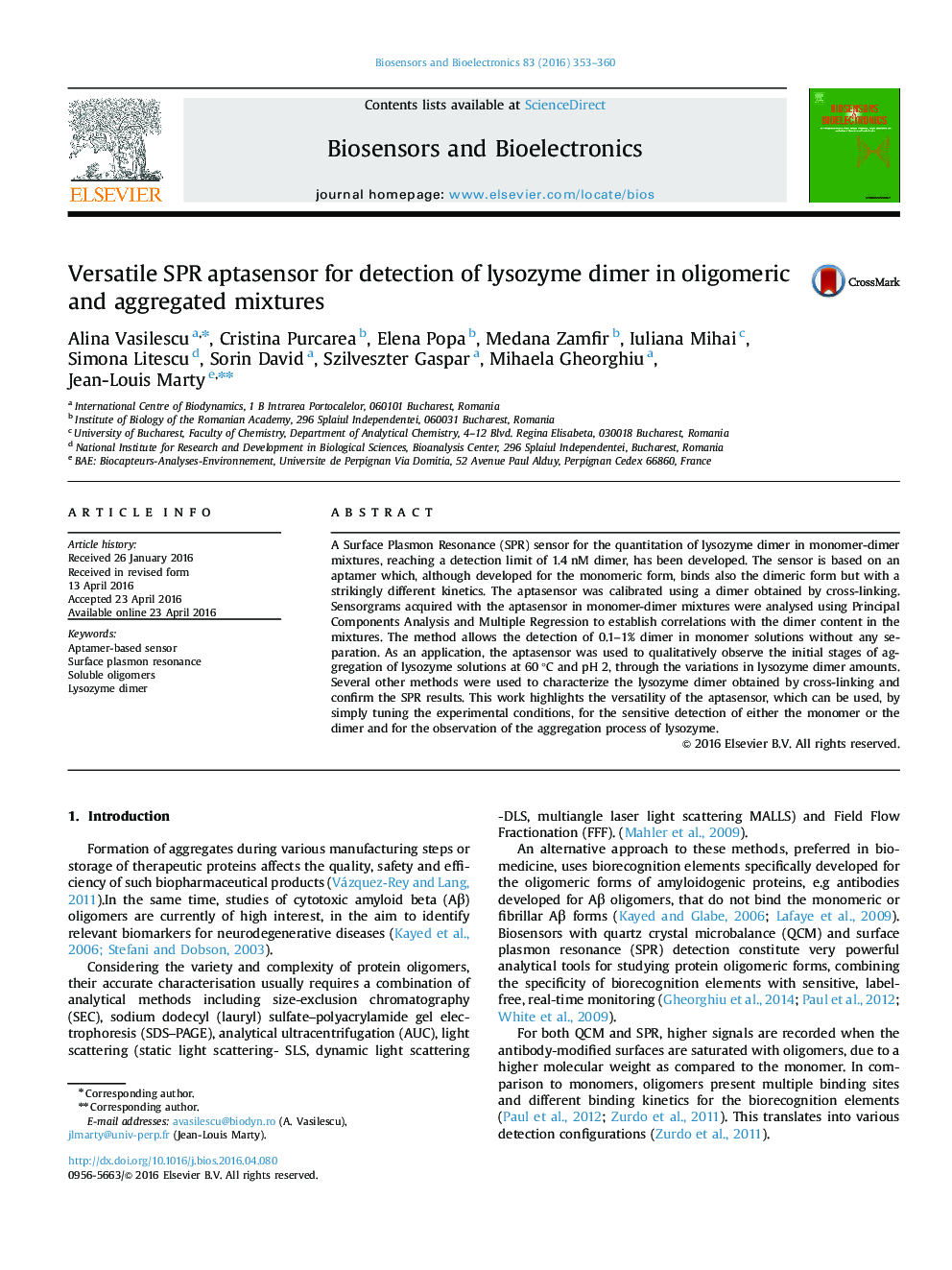| Article ID | Journal | Published Year | Pages | File Type |
|---|---|---|---|---|
| 866239 | Biosensors and Bioelectronics | 2016 | 8 Pages |
•SPR aptasensor for lysozyme was optimised for sensitive detection of the dimeric form•Selectivity for monomer/dimer is modulated by binding kinetics and buffer composition•Chemometric analysis of sensorgrams allow correlation with dimer amount in mixtures•Aptasensor is useful to detect 0.1–1% dimer in mixture with monomer or follow aggregation
A Surface Plasmon Resonance (SPR) sensor for the quantitation of lysozyme dimer in monomer-dimer mixtures, reaching a detection limit of 1.4 nM dimer, has been developed. The sensor is based on an aptamer which, although developed for the monomeric form, binds also the dimeric form but with a strikingly different kinetics. The aptasensor was calibrated using a dimer obtained by cross-linking. Sensorgrams acquired with the aptasensor in monomer-dimer mixtures were analysed using Principal Components Analysis and Multiple Regression to establish correlations with the dimer content in the mixtures. The method allows the detection of 0.1–1% dimer in monomer solutions without any separation. As an application, the aptasensor was used to qualitatively observe the initial stages of aggregation of lysozyme solutions at 60 °C and pH 2, through the variations in lysozyme dimer amounts. Several other methods were used to characterize the lysozyme dimer obtained by cross-linking and confirm the SPR results. This work highlights the versatility of the aptasensor, which can be used, by simply tuning the experimental conditions, for the sensitive detection of either the monomer or the dimer and for the observation of the aggregation process of lysozyme.
